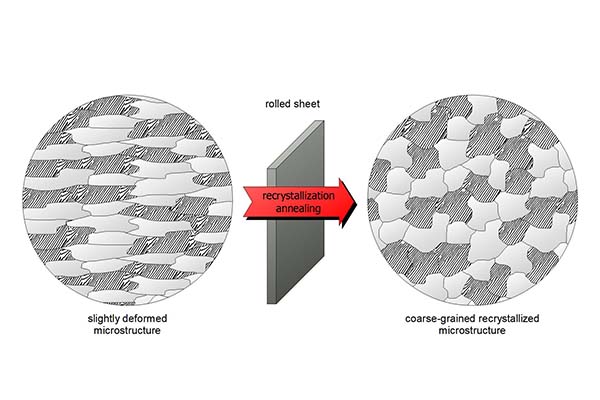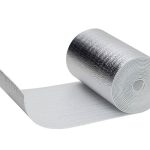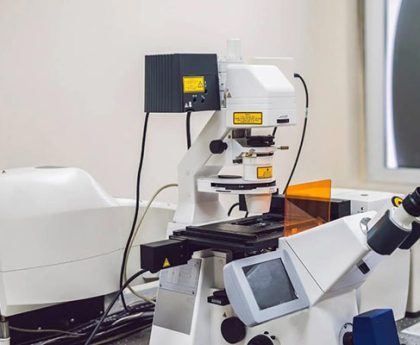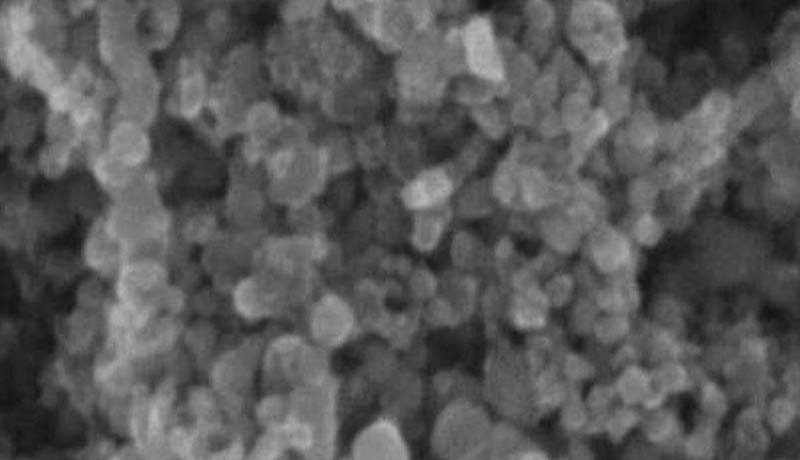Recrystallization Process:
When a deformed metal is heated to elevated temperatures, the atoms’ diffusion ability increases and the elongated (or flattened) and fractured grains undergo re-nucleation and growth to form new, uniform, and fine equiaxed grains. This process is known as recrystallization. After recrystallization, the strength and hardness of the metal significantly decrease while plasticity and toughness greatly improve. The phenomenon of work hardening is eliminated, and all internal stresses vanish. As a result, the physical and chemical properties of the metal are restored to their pre-deformation levels. The newly formed grains in the recrystallization possess the same crystal lattice type as the grains before and after deformation.
Recrystallization Temperature:
The temperature at which recrystallization occurs in a deformed metal is a temperature range, not a constant temperature. Generally, the so-called recrystallization temperature refers to the lowest recrystallization temperature (T_rec), which is the minimum temperature at which a metal, deformed by a significant amount (over 70%), can fully recrystallize after one hour of heating. The lowest recrystallization temperature is related to the melting point (T_m) of the metal as follows:
T_rec = (0.35~0.4)T_m
The temperature unit is the absolute temperature (Kelvin, K). The following factors influence the lowest recrystallization temperature:
- Pre-deformation: The relative amount of plastic deformation before recrystallization is known as pre-deformation. Greater pre-deformation leads to more crystal defects and a less stable microstructure, resulting in a lower lowest recrystallization temperature. However, once the pre-deformation reaches a certain level, the lowest recrystallization temperature tends to stabilize.
- Melting Point: A higher melting point corresponds to a higher lowest recrystallization temperature.
- Impurities and Alloying Elements: Impurities and alloying elements, especially those with high melting points, hinder atomic diffusion and grain boundary migration, significantly raising the lowest recrystallization temperature. For instance, high-purity aluminum (99.999%) has the lowest recrystallization temperature of 80°C, while industrial-purity aluminum (99.0%) has a raised lowest recrystallization temperature of 290°C.
- Heating Rate and Soaking Time: Recrystallization is a diffusion-driven process that requires time to complete. Increasing the heating rate promotes recrystallization at higher temperatures, while longer soaking times result in lower recrystallization temperatures.
Recrystallized Grain Size:
Grain size significantly influences the strength, plasticity, and toughness of metals, making it essential to control the grain size after recrystallization, especially for steels and alloys without phase transformations. The main factors affecting the grain size after recrystallization annealing are the heating temperature and pre-deformation.
- Heating Temperature: Higher heating temperatures facilitate atomic diffusion and grain boundary migration, leading to faster grain growth.
- Pre-deformation: The effect of pre-deformation primarily depends on the uniformity of deformation. Non-uniform deformation results in larger grains after recrystallization annealing. When the pre-deformation is small, recrystallization may not occur, and the grain size remains unchanged. As the pre-deformation reaches 2% to 10%, only a few grains deform, leading to an uneven distribution of deformation, which results in fewer recrystallization nuclei and a wide range of grain sizes. However, this condition is favorable for grain coarsening due to grain engulfment, resulting in extremely coarse grains. This degree of deformation is known as the critical deformation. Avoiding plastic deformation within the critical deformation range during production is essential. Beyond the critical deformation, with increasing deformation, the grains undergo more intense and uniform deformation, leading to more recrystallization nuclei, resulting in finer grains after recrystallization. However, when the deformation is excessively high (approximately ≥90%), the grains may undergo abnormal grain growth, typically caused by deformation texture.
In industrial applications, recrystallization annealing is commonly used to restore the plastic deformation capability of metals, thereby enabling further processing. For instance, in the production of iron-chromium-aluminum resistance wires, after cold drawing to a certain deformation level, hydrogen protection recrystallization annealing is performed to continue cold drawing and obtain finer wire materials. To expedite the process, the actual recrystallization annealing temperature is set approximately 100°C to 200°C higher than the metal’s lowest recrystallization temperature.
Conclusion
Recrystallization is a crucial phenomenon in the metallurgical world, influencing material properties such as strength, hardness, plasticity, and toughness. Properly controlling recrystallization temperatures and grain sizes is essential for tailoring materials to meet specific requirements in various industrial applications. Understanding the factors affecting recrystallization allows engineers and material scientists to optimize manufacturing processes and design superior materials for diverse applications.




